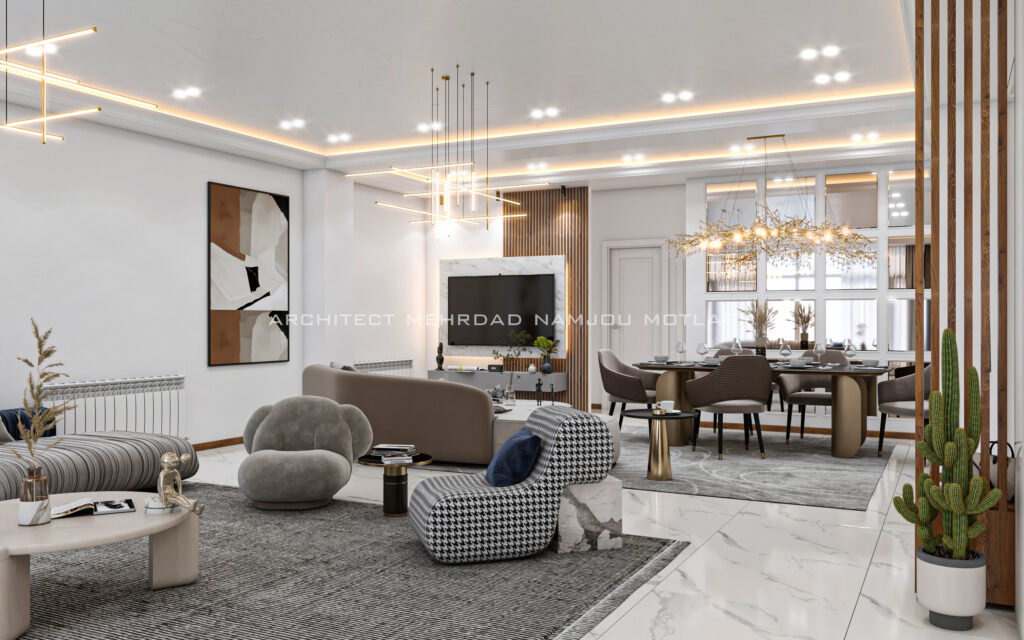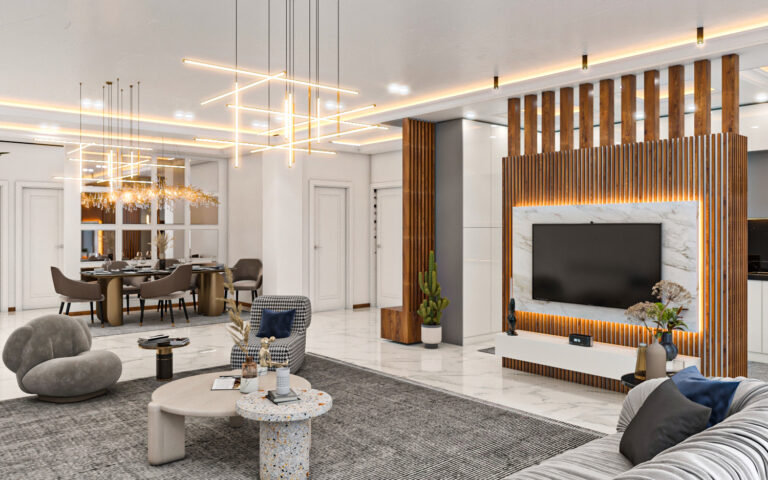
Lighting plays a crucial role in interior design, influencing the ambiance, functionality, and aesthetics of a space. A well-planned lighting design enhances visual comfort, highlights architectural features, and improves the overall atmosphere. Below are key principles for achieving proper lighting in interior design:
1. Types of Lighting
A balanced lighting scheme consists of different types of lighting that serve specific purposes:
- Ambient Lighting: The main source of illumination, providing overall brightness (e.g., ceiling fixtures, recessed lighting).
- Task Lighting: Focused lighting for specific activities like reading, cooking, or working (e.g., desk lamps, under-cabinet lights).
- Accent Lighting: Used to highlight architectural details, artwork, or decorative elements (e.g., wall sconces, spotlights).
2. Maximizing Natural Light
- Large windows, skylights, and glass doors allow for maximum daylight penetration.
- Light-colored walls and reflective surfaces enhance brightness.
- Sheer curtains or adjustable blinds control light intensity without blocking it completely.
3. Using Layered Lighting
A combination of different lighting types creates depth and functionality in a space:
- Combining ambient, task, and accent lighting improves both aesthetics and usability.
- Dimmable lights offer flexibility in adjusting brightness for different moods and occasions.
4. Choosing the Right Color Temperature
- Warm White (2700K-3000K): Creates a cozy, relaxing atmosphere (ideal for bedrooms and living rooms).
- Cool White (3500K-4500K): Provides a neutral, energizing feel (suitable for offices and kitchens).
- Daylight (5000K-6500K): Mimics natural daylight, enhancing concentration (best for workspaces and bathrooms).
5. Placement of Light Fixtures
- Ceiling-mounted lights provide general illumination.
- Wall-mounted fixtures enhance vertical space and create a layered effect.
- Floor and table lamps add decorative and functional lighting in seating areas.
Conclusion
Proper lighting enhances the aesthetic and practical aspects of interior spaces. By combining natural and artificial lighting, using a layered approach, and selecting the right color temperatures, one can create a well-balanced and visually appealing environment.


No comments yet.